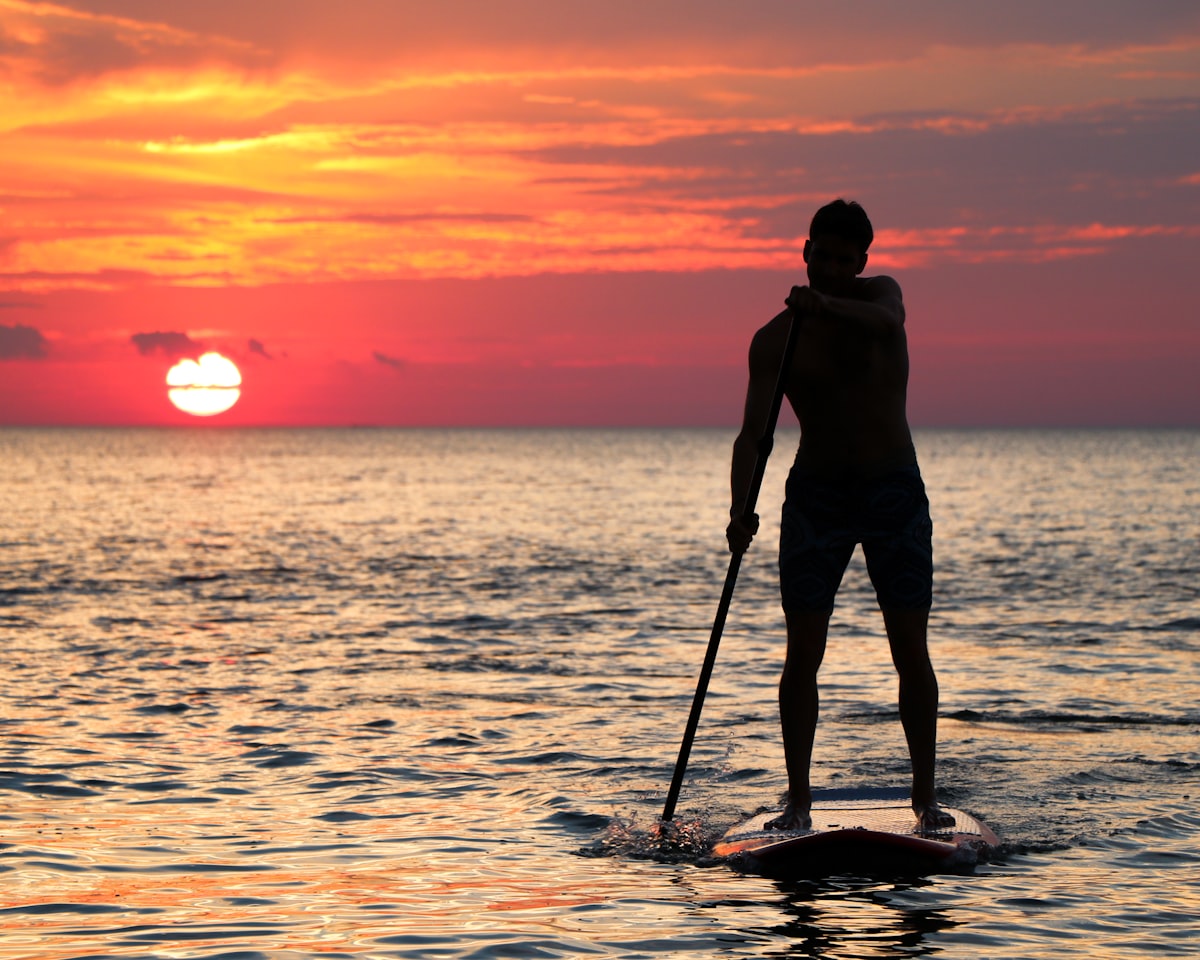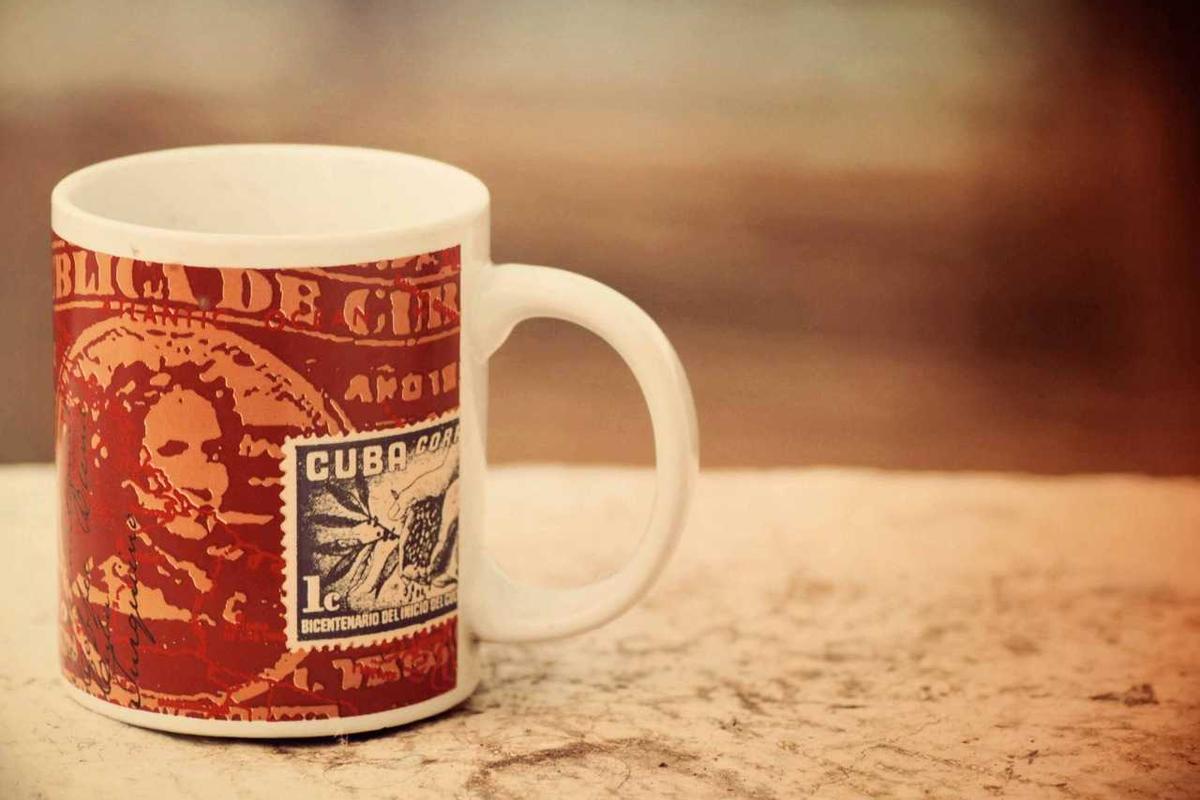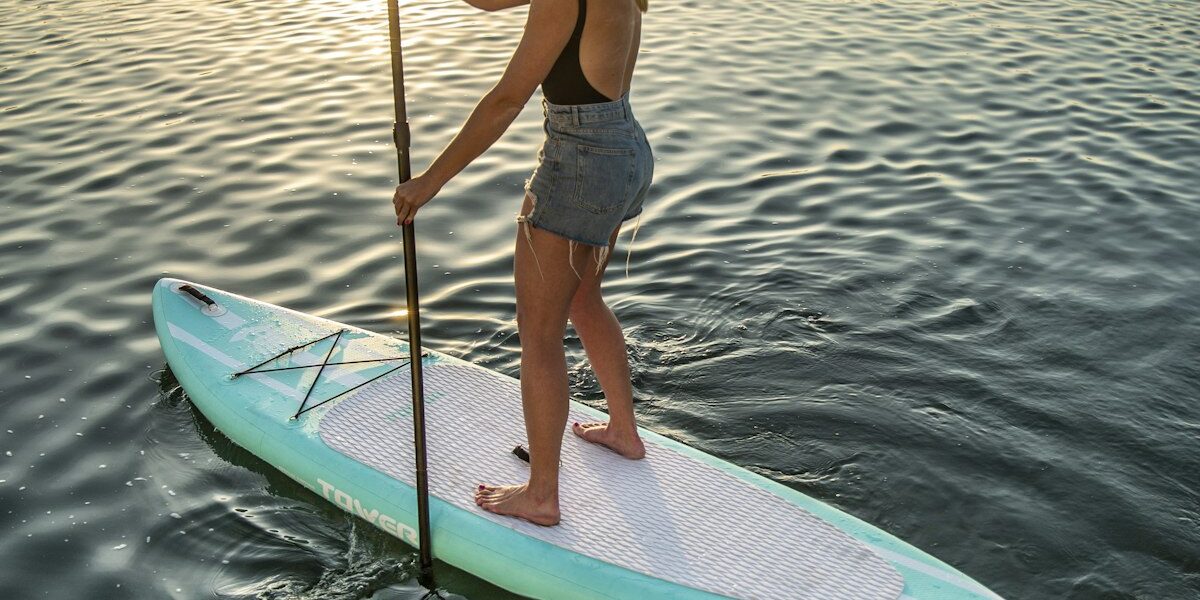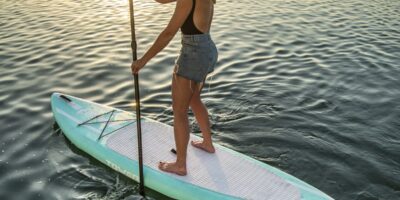Standing on a paddle board is not just about getting up and balancing; it involves adopting the best position to ensure stability, efficiency, and overall enjoyment of your paddling experience. Whether you’re a seasoned paddler or someone just stepping onto the board for the first time, understanding the optimal standing position is crucial for mastering this popular water sport.
**The Basics of Standing on a Paddle Board**
To begin, it’s important to locate the center of the board. This is typically where you’ll find the carry handle, which is a good indicator of the board’s balance point. Starting in a kneeling position near this area allows you to feel the board’s reaction to your weight and movements before you stand up.
When you’re ready to transition from kneeling to standing, keep your knees bent and your feet about hip-width apart. This stance provides a solid base of support. Gradually lift yourself up, keeping your gaze forward and not at your feet, which can cause you to lose balance.
**Feet Positioning**
Proper feet positioning is a critical aspect of achieving the best standing position on a paddle board. Your feet should be parallel, pointing directly forward, and positioned on either side of the center line of the board. This stance helps in distributing your weight evenly across the board.
Avoid placing your feet too close together as it can make the board feel unstable. Conversely, having them too far apart can limit your mobility and make it difficult to paddle effectively. Experiment with slight adjustments in the width of your stance to find what feels most stable and comfortable for your body size and the conditions of the water.
**Body Alignment and Posture**
Maintaining a good posture is essential when standing on a paddle board. Keep your back straight, with a slight bend in the knees to absorb any bumps or waves you encounter. This not only helps in maintaining balance but also protects your back from strain.
Your head should be up and your gaze fixed on the horizon. This position helps in keeping your balance much like it does in many other sports. Avoid looking down at your feet as much as possible.
**Using Your Paddle for Stability**
Your paddle isn’t just a tool for movement; it’s also a significant aid in balancing. When you’re new to paddle boarding, you can use the paddle as an outrigger, placing it on the water’s surface when you feel unsteady. As you gain more confidence, use your paddle strokes to help maintain and regain balance as needed.
**Advanced Tips for Improved Performance**
As you become more comfortable with the basic standing position, you can start to explore slightly more advanced techniques for better performance. For instance, slightly angling your feet outward can provide a more powerful paddling stance. This position allows for stronger and more effective strokes, which is particularly useful in rougher waters or when increasing speed.
Another technique involves shifting your weight slightly from one leg to the other. This shifting movement, known as ‘rail to rail’ paddling, helps the board to carve through the water more effectively, providing a smoother and faster ride.
**Final Thoughts**
There is no one-size-fits-all answer to the best position for standing on a paddle board as it often depends on a variety of factors including board type, water conditions, and personal comfort. However, by starting with these foundational tips and adjusting as needed based on your own experiences, you’ll be able to find the perfect balance and enjoy every moment on the water.
Remember, the key to proficiency in paddle boarding is practice and patience. Spend ample time on the water practicing these techniques and soon standing on a paddle board will feel as natural as walking.
Recommended SUP Gear
GYMMALL Inflatable Paddle Board
Complete SUP package for all skill levels.

FunWater Inflatable SUP
Ultra-light board with all accessories included.
As an Amazon Associate, we earn from qualifying purchases.





Leave a Reply